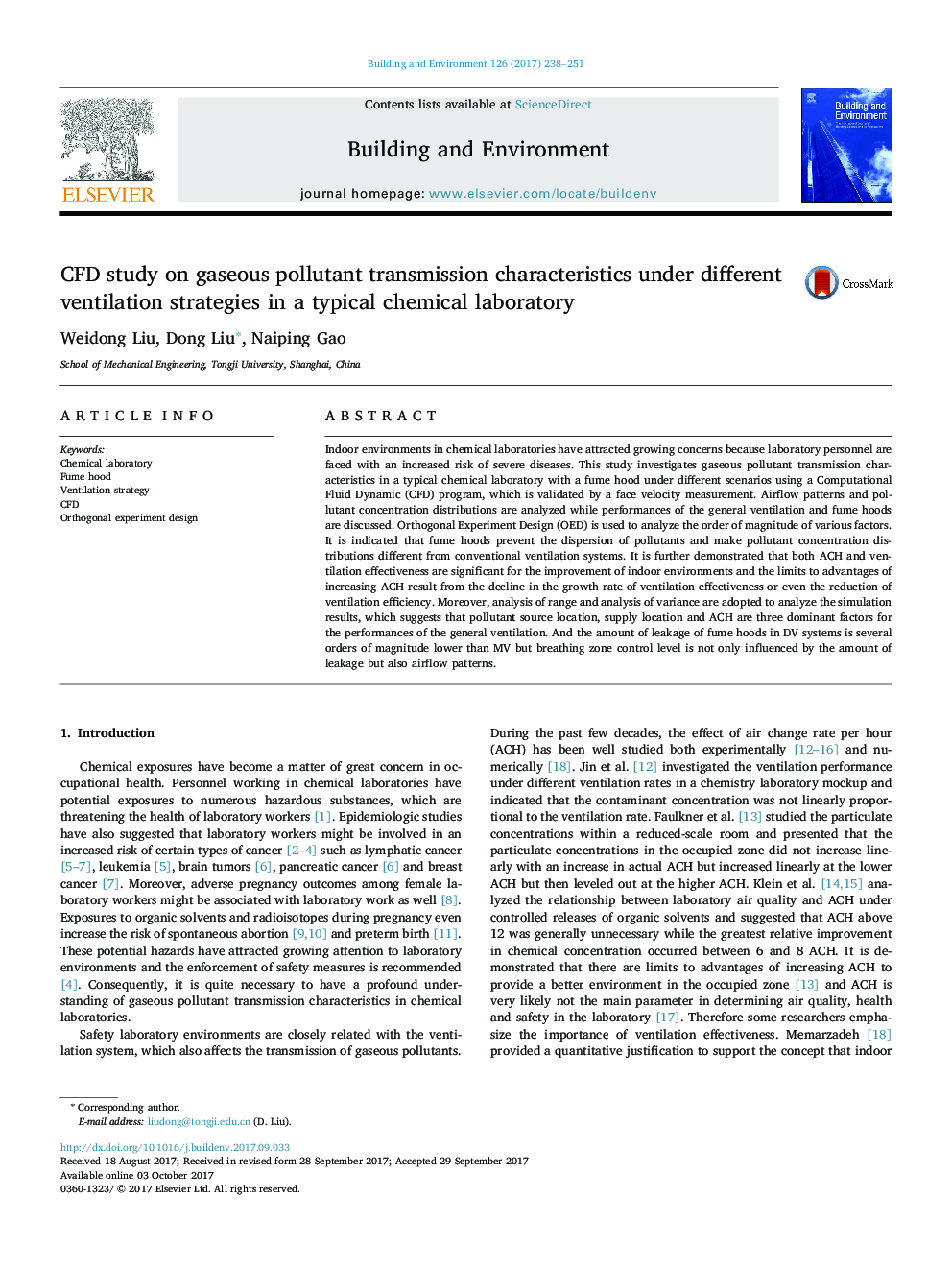| کد مقاله | کد نشریه | سال انتشار | مقاله انگلیسی | نسخه تمام متن |
|---|---|---|---|---|
| 6479183 | 1428366 | 2017 | 14 صفحه PDF | دانلود رایگان |

- Airflow patterns and pollutant concentration distributions in chemical laboratories are affected by fume hoods.
- The limits of advantages to increasing ACH results from the change of ventilation effectiveness.
- The amount of leakage of fume hoods in DV based conditions are several orders of magnitude lower than MV based.
- Breathing zone control level is influenced not only by the amount of leakage but also airflow patterns.
- The ability to eliminate pollutants of the general ventilation is affected by ACH, source location and supply location.
Indoor environments in chemical laboratories have attracted growing concerns because laboratory personnel are faced with an increased risk of severe diseases. This study investigates gaseous pollutant transmission characteristics in a typical chemical laboratory with a fume hood under different scenarios using a Computational Fluid Dynamic (CFD) program, which is validated by a face velocity measurement. Airflow patterns and pollutant concentration distributions are analyzed while performances of the general ventilation and fume hoods are discussed. Orthogonal Experiment Design (OED) is used to analyze the order of magnitude of various factors. It is indicated that fume hoods prevent the dispersion of pollutants and make pollutant concentration distributions different from conventional ventilation systems. It is further demonstrated that both ACH and ventilation effectiveness are significant for the improvement of indoor environments and the limits to advantages of increasing ACH result from the decline in the growth rate of ventilation effectiveness or even the reduction of ventilation efficiency. Moreover, analysis of range and analysis of variance are adopted to analyze the simulation results, which suggests that pollutant source location, supply location and ACH are three dominant factors for the performances of the general ventilation. And the amount of leakage of fume hoods in DV systems is several orders of magnitude lower than MV but breathing zone control level is not only influenced by the amount of leakage but also airflow patterns.
Journal: Building and Environment - Volume 126, December 2017, Pages 238-251